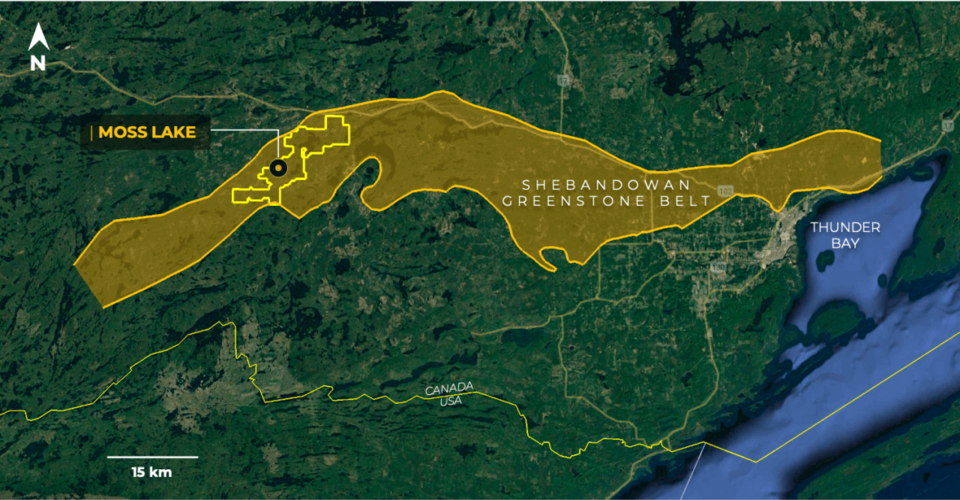THUNDER BAY — Researchers from the geology department at Lakehead University have received over $300,000 in funding to investigate a portion of the Shebandowan greenstone belt in Northwestern Ontario.
Greenstone belts are located in different parts of the world.
They consist of exposed volcanic rock, and some sedimentary rocks, that have undergone heat and pressure and have been pushed up toward the surface over millions of years.
They can host economic deposits of numerous minerals, in particular gold but also silver, copper and zinc.
Pete Hollings, the Northern Ontario Heritage Fund Corporation Industrial Research Chair in Mineral Exploration, will lead a team that will use state-of-the-art analytical techniques to get a better understanding of the mineralization in an area of the Shebandowan greenstone belt about 100 kilometres west of Thunder Bay.
Goldshore Resources, an emerging mining company that owns the Moss Lake Gold Project, is providing $80,000 of the funding.
The Natural Sciences and Engineering Research Council of Canada is contributing $160,000, and the non-profit national research organization Mitacs came up with $75,000.
"We are really looking forward to working closely with the team from Goldshore over the next two years to develop a better understanding of this part of the Shebandowan greenstone belt," Hollings said.
He added "The ability to embed our students within the Goldshore operations thanks to the support from Mitacs and NSERC will be a great opportunity for the students and postdoc researchers to contribute to the ongoing exploration in the region."
According to a news release from Lakehead University, even though Canada is a world leader in mineral exploration and mining technology, the discovery of new mineral resources is declining despite rising expenditures on exploration.
This has made the development of techniques to guide exploration towards new mineral targets increasingly important.
Hollings and assistant geology professor Noah Phillips will be aided by two master's students and one postdoctoral fellow, who will learn to use modern digital field methods and microanalytical instruments.
The university's statement said the experience will make the students "highly skilled assets for industry, academia, or government surveys."
Overall, the project is expected to improve exploration confidence and success in the search for new metal resources by enhancing knowledge that can be applied elsewhere in Canada and by Canadian companies working overseas.
Tools created within the project are also projected to help mining firms improve exploration efficiency and reduce the time and capital costs required for new discoveries.
